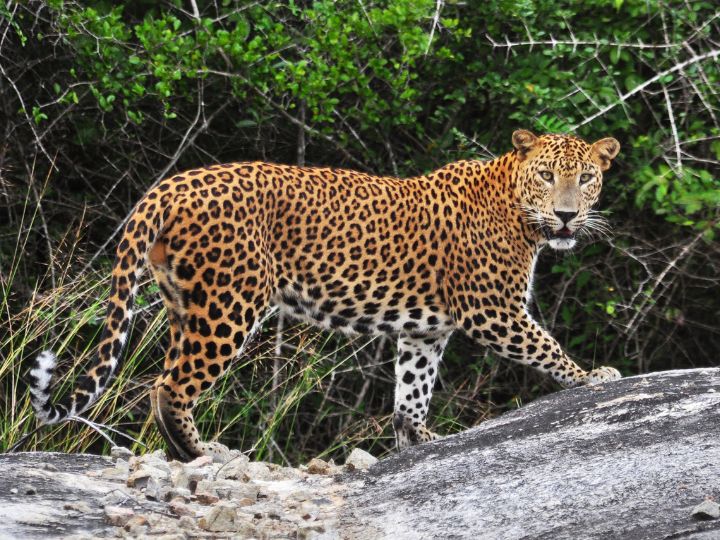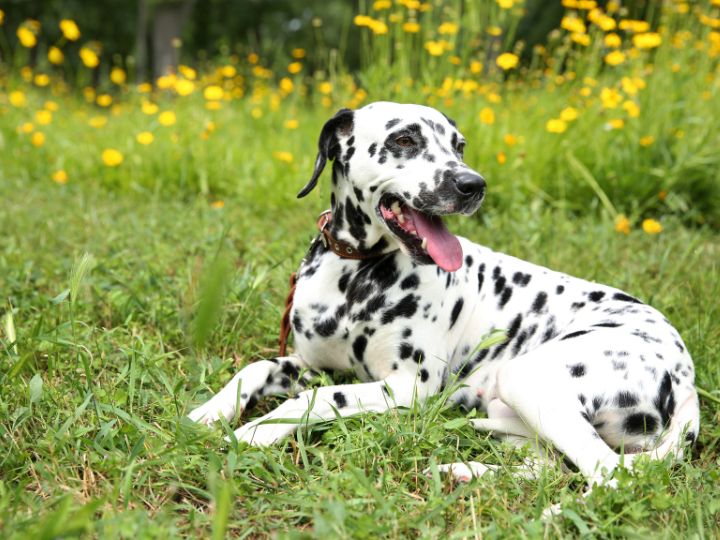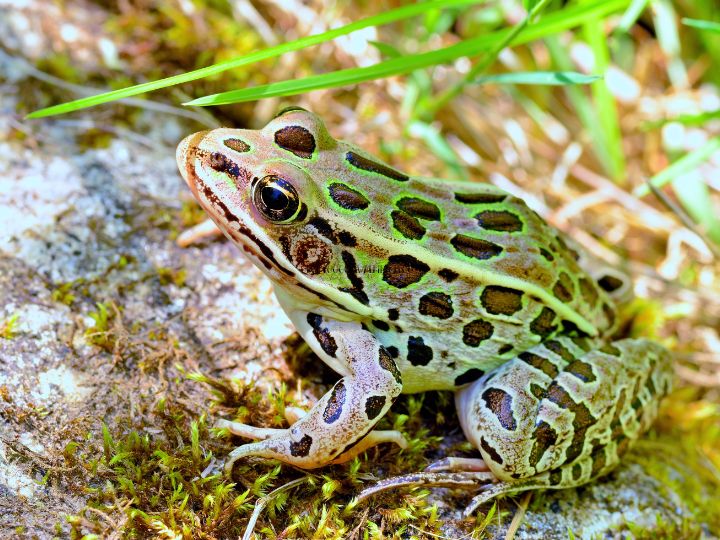Animals with spots are not only captivating to the eye, but they also serve various purposes in the animal kingdom. From camouflage to social interaction, spotted patterns are a remarkable display of diversity and evolution. In this article, we’ll explore some of the most fascinating creatures adorned with these distinctive designs.
Spotted animals can be found across the globe, inhabiting the depths of the ocean, the lushness of tropical rainforests, and even the arid landscapes of deserts. These beautiful patterns are Nature’s masterpiece, showcasing an artistic blending of intriguing form and function.
As we delve into the world of spotted creatures, we will examine the reasons behind their unique appearances and discuss how these spots play a significant role in their survival. From the bright colors of poison dart frogs to the striking patterns of leopards, get ready to embark on a journey through the incredible realm of nature’s most exquisite designs.
Wild Animals with Spots
Big Cats
Among the big cats, leopards and jaguars are known for their distinctive spotted coats. The leopard(Panthera pardus) inhabits various regions of Africa and Asia. Their beautiful fur features a unique pattern of rosette spots, which helps them blend into their surroundings.

The jaguar (Panthera onca), native to the Americas, has a similar appearance to the leopard but can be differentiated by its larger size and more defined rosette spots. Also, the jaguar’s spots often contain a small dot in the center.

Canines and Mustelids
Spotted animals are not exclusive to the feline family. In the category of canines, the African Wild Dog(Lycaon pictus) has a distinct coat coloration comprising irregular patches and spots in brown, black, and white.
On the other hand, mustelids, such as the European badger (Meles meles), display white spots or stripes on their heads, depending on the species. These spots serve a double purpose: camouflaging the animal and warning potential predators.
Ungulates
Some species of ungulates (hoofed mammals) also have spotted patterns. Notably, the giraffe (Giraffa), the world’s tallest mammal, is characterized by an intricate network of color spots covering its entire body. These patterns vary among the nine subspecies, as shown below:
| Subspecies | Spot shape |
|---|---|
| Reticulated giraffe | Polygonal, sharp-edged spots |
| Masai giraffe | Large, irregular-shaped spots |
| Southern giraffe | Star-shaped spots |
Another example of a spotted ungulate is the Axis deer (Axis axis) from India and Sri Lanka. Both males and females have white spots on their reddish-brown coats, which helps them blend into the forested areas where they reside.
Domestic Animals with Spots
Dogs
Some popular spotted dog breeds are the Dalmatian, Australian Cattle Dog, and the Great Dane. Though these breeds can vary in size and temperament, they all share a common feature: beautiful spotted coats.
- Dalmatians have short fur and well-defined spots scattered across their bodies.
- Australian Cattle Dogs may have a mix of spots and patches, known as a speckled or mottledappearance.
- Great Danes often have a harlequin pattern, which features large, irregular black patches on a white background.

Cats
Spotted cats can include both domestic and wild felines. In the domestic realm, the Bengal and Ocicatare two breeds known for their distinctive spotted coats. Here is a comparison of the two:
| Feature | Bengal | Ocicat |
|---|---|---|
| Fur type | Short, sleek, and silky | Short and satiny |
| Coat pattern | Rosettes or marbled | Spots, arranged in rows |
| Origins | Asia Leopard Cat hybrid | Siamese/Abyssinian blend |
Both these breeds are known for their wild-like appearance and playful personalities.
Horses
Horses with spots are eye-catching and often admired for their unique patterns. Among the several spotted horse breeds, the Appaloosa and Knabstrupper stand out:
- Appaloosa: Originating in the United States, the Appaloosa has a distinctively patterned coat that can include spots, speckles, and mottles. They are versatile and can be found in a variety of horse sports.
- Knabstrupper: Hailing from Denmark, the Knabstrupper has a coat similar to the Appaloosa, but is more likely to have leopard spotting. Primarily found in Europe, this breed is rare but known for its talent in dressage and other disciplines.
It’s easy to see that spots are not limited to size or species when it comes to our favorite domestic animals. Each breed showcases their unique patterns with pride and elegance, delighting animal lovers everywhere.

Aquatic Spotted Animals
Fish
There are various types of spotted fishes in the aquatic world. Some popular ones include:
- Spotted Gar: This long-nosed, freshwater fish is mainly found in North America. Its body is covered in large, distinctive spots.
- Mandarin Fish: A vibrantly colored reef species, it’s best known for its striking blue spots.
- Red-Lionfish: With bold, reddish-brown bands and white spots, this venomous fish is a beauty to observe.
Spotted fish species can be recognized by their size, habitat, and coloration. Here’s a brief table summarizing these traits.
| Name | Size | Habitat | Coloration |
|---|---|---|---|
| Spotted Gar | 18-48 inches | Freshwater | Olive-green body with dark spots |
| Mandarin Fish | 3-4 inches | Coral reefs | Blue, orange, and green with blue spots |
| Red-Lionfish | 11-15 inches | Protected reefs | Reddish-brown bands with white spots |
Cephalopods
Spotted cephalopods are some of the most intriguing creatures in the sea. They can change their color, patterns, and even texture to blend with their surroundings. Two prominent examples consist of:
- Blue-Ringed Octopus: With bright blue rings that warn predators of its highly toxic venom, this little octopus is both beautiful and dangerous.
- Bigfin Reef Squid: These delicate sea creatures can vary their skin patterns, which include spots and stripes, for camouflage or communication.
As with fish, the spotted cephalopods also differ in size, habitat, and coloration. Let’s take a look at their main characteristics in the following table.
| Name | Size | Habitat | Coloration |
|---|---|---|---|
| Blue-Ringed Octopus | 5-8 inches | Coral reefs & tide pools | Yellow, brownish-yellow, with blue rings |
| Bigfin Reef Squid | 13-40 inches | Coastal waters & reefs | Variable, often brownish-red with spots and stripes |
These diverse aquatic spotted animals captivate and fascinate everyone who comes across them in their natural habitats. Whether one admires them for their beauty or for their fascinating traits, these organisms remain important components of their respective marine ecosystems.

Birds with Spots
Birds are fascinating creatures, and their variety in markings, colors, and patterns can be quite intriguing. In this section, we will explore two categories of birds that have spots: songbirds and raptors.
Songbirds
Songbirds are known for their melodious tunes and eye-catching appearances. Some songbirds have spots that not only add to their aesthetic appeal but also serve as camouflage or for attracting mates. Here are a few examples:
- American Robin: Turdus migratorius, has a striking reddish-orange breast with distinctive white spots on their outer tail feathers.
- European Starling: Sturnus vulgaris, displays an iridescent sheen adorned with white spots during non-breeding seasons.
- Song Thrush: Turdus philomelos, flaunts a brownish upper body and cream-colored underparts with bold, dark spots.
Some of the common spotted songbirds can be listed as below:
- Eastern Bluebird
- Spotted Towhee
- Wood Thrush
- Ovenbird
Raptors
Raptors, or birds of prey, are known for their sharp talons, powerful vision, and distinctive markings. Spots are not uncommon among these formidable hunters. Let’s take a look at some spotted raptors:
- Martial Eagle: Polemaetus bellicosus, one of the largest eagles in Africa, is recognized by its dark, chocolate-brown body with white spots over its wings and back.
- Crested Serpent Eagle: Spilornis cheela, is a medium-sized raptor widely found in Asia, having a dark-brown head and spotted wing coverts that contrast with its white underparts.
- African Fish Eagle: Haliaeetus vocifer, strikes an impressionable white head with dark, spotted wings.
Raptors can be observed with unique spots like:
- Swainson’s Hawk
- Mississippi Kite
- Collared Forest Falcon
Spots on birds bring beauty, intrigue, and diversity to the world of avians. Both songbirds and raptors are just a small sample of the myriad of species that sport spots as part of their allure. So, next time you’re bird watching, keep an eye out for these charming spotted beauties!
Reptiles and Amphibians with Spots
Frogs
Among the diverse world of spotted frogs, the red-legged walking frog (Phrynomantis bifasciatus) stands out. This African species boasts a striking pattern of red and black spots on its legs. A fun fact about these frogs is that instead of hopping like most frogs, they prefer to walk.
In the Americas, the leopard frog is worth a mention. With distinct circular or oval spots across its green or brown body, this frog earned its name due to its resemblance to a leopard.

Lizards
Spotted lizards come in a variety of shapes and sizes, with numerous species flaunting their unique patterns. For instance, the gecko family has various spotted members. One example is the tokay geckowith its vibrant blue body and bright orange spots.
Here is a list of some notable spotted lizards:
- European eyed lizard or ocellated lizard (Jeweled Lacertas)
- Cape thick-toed gecko (Pachydactylus capensis)
- Spotted tree monitor (Varanus scalaris)
Snakes
When it comes to spotted snakes, the ball python often comes to mind. Also known as the royal python, this African species exhibits different brown spots all over its body, with various color morphs being bred in captivity.
| Snake Species | Regions | Spot Description |
|---|---|---|
| Carpet python | Australia & New Guinea | Dark irregular spots throughout |
| Spotted bush snake | Eastern & Southern Africa | Highly variable blue or green spots |
| Green palm-pitviper | Mesoamerican region | Green-black spots on sides |
Each of the snakes mentioned above has a unique pattern of spots, playing a crucial role in their camouflaging strategies.
Frequently Asked Questions
What creatures are known for their distinctive spotted patterns?
Some animals known for their spotted patterns include leopards, cheetahs, giraffes, and spotted hyenas. Many fish and insects, such as ladybugs and angelfish, also display spots as part of their natural patterns.
Can you show me images of critters with spotty coats?
Unfortunately, as a text-based AI, I am unable to display images. However, you may want to try using a search engine and type in words like “spotted animals” or look up specific creatures with spots for a visual representation.
Which reddish beast boasts contrasting black speckles?
The red panda is a fluffy, reddish-brown animal with contrasting black speckles on its fur. It’s native to the Eastern Himalayas and Southwestern China and is an arboreal mammal known for its agility in trees.
What’s the deal with those animals rocking black polka dots?
Black polka dots on animals serve as a form of camouflage, especially in dappled sunlight or underwater environments. These spots can help break up their overall shape, making it more difficult for predators or prey to distinguish them.
Got any examples of wildlife that’s rocking spots on a white backdrop?
The snowy owl is an excellent example of wildlife with spots on a white backdrop. Its white plumage is peppered with dark markings, which allows the bird to blend into snowy landscapes during winter months. Another example is the Dalmatian dog, a breed known for its white coat and black spots.
Name a few black-and-white patched animals, will ya?
Some black-and-white patched animals include zebras, pandas, and killer whales (orcas). These unique patterns serve a variety of purposes such as camouflage, identification, and temperature regulation.
Becky is a fervent wildlife enthusiast and pet care expert with a diploma in canine nutrition. Her love for animals stretches beyond the domestic, embracing the wild tapestry of global fauna. With over a decade of experience in animal welfare, Becky lends her expertise to OutlandishOwl through insightful articles, captivating wildlife information, and invaluable guidance on pet nutrition. Her work embodies a deep commitment to understanding the intricate lives of animals and a passion for educating others on sustaining natural habitats. Becky's hands-on conservation efforts and her knack for translating complex dietary science into practical pet feeding tips make her an indispensable voice for creatures great and small.



